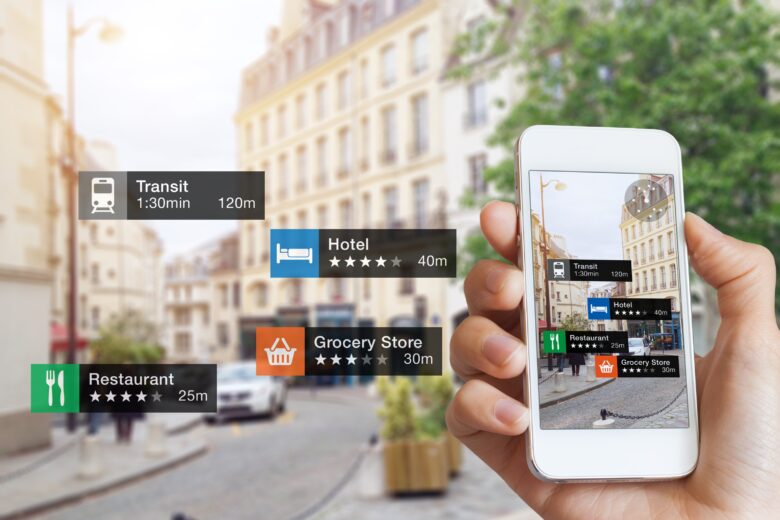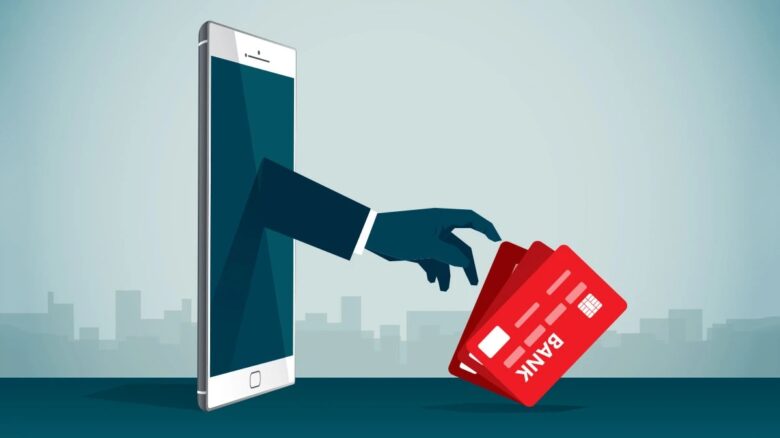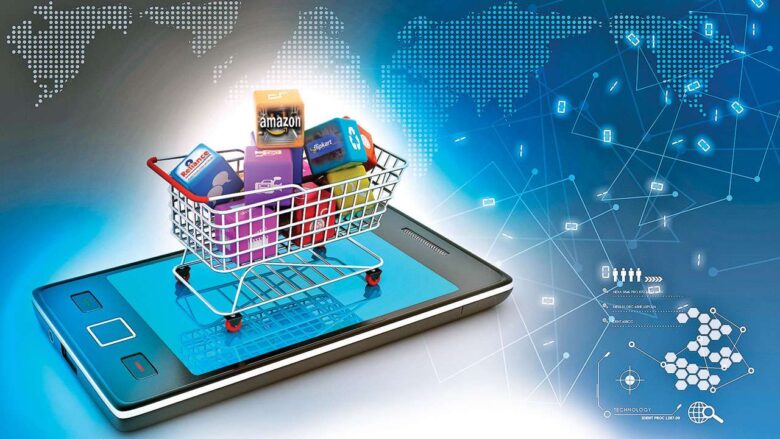Launching a startup in the field of e-Commerce is a promising idea in 2024 and beyond since the majority of shoppers are still not ready to come back to crowded shopping malls. The eCommerce trends are also changing under the influence of a whole set of factors – from the shifting values of customers to the rapid innovation development and the recent pandemic. Surely, you should take them into account to satisfy the changing needs of your customers and stay competitive in a new environment. So, below are the most essential eCommerce trends for 2024 you may follow. However, be wise with each decision you make.
Top 15 eCommerce Trends for 2024 and Beyond
So, here are the trends in the e-commerce industry that will dominate 2024 and the next year.
1. Headless eCommerce

Source: virtina.com
Headless eCommerce is a new approach to eCommerce application architecture. In a nutshell, headless eCommerce apps have their front and backends separated from each other and perform users’ requests via APIs. In practice, this approach is much more flexible since the apps become more lightweight, there are more opportunities for customization and personalized user experience.
Progressive web applications (PWAs) are the perfect examples of headless eCommerce solutions which will be very relevant in the coming years. What’s more, these apps shouldn’t meet the official application stores’ requirements to be published there and can work even without an internet connection. Also, this approach is more beneficial when it comes to the cost to build an eCommerce site. In the article of Mind Studios, you can check all the costs of creating an eCommerce website in detail.
2. The confrontation between fast fashion and environmental issues
Just try to imagine the scale of the problem. Every five minutes, 10,000 items of fast-fashion clothing end up in a landfill. These are catastrophic volumes of pollution per year. Fortunately, user preferences are starting to change, and under the influence of the coronavirus pandemic as well.
According to the study, after the lesson of the pandemic, people have become more frugal with the resources they already have, avoid unnecessary and impulsive spending, and this will greatly affect the fashion industry.
The next year will be marked by a serious confrontation between fast fashion brands (including such famous names as Boohoo, Forever 21, Missguided, and Victoria Secret) and consumers who have begun to feel responsible for the environment.
3. Voice commerce

Source: martechtoday.com
Voice commerce is a new and really cool technology that allows users to make purchases with voice commands. Moreover, this is one of the current eCommerce trends, since half of all voice searches on Google are already built accepting voice.
This eCommerce trend is also directly related to the growing popularity of smart speakers such as the Amazon Echo and Google Home. More than 200 million units were sold back in 2019, and it is forecasted that the market for smart speakers will reach $15,6 billion by 2025.
4. Dynamic pricing
In the traditional definition, dynamic pricing implies the ability to reduce or increase the price depending on changing market conditions. In the data-driven environment, this is the opportunity to charge more.
Dynamic pricing in its second definition became a reality once brands realized the value of big data and the ability to figure out the real purchasing power of users by analyzing information using artificial intelligence. Can brands really benefit from this? Definitely, yes. Is this fair to buyers and does it not contradict the fundamental laws of the market? Well, debatable.
Research shows you run the risk of ruining your reputation if you overuse dynamic pricing. Fortunately, while not all companies use this strategy, buyers still have the ability to compare prices.
5. AI penetration and adoption

Source: gabrielamueller.com
Artificial Intelligence is already here, and yes, it is it that helped shape the dynamic pricing strategy. However, since this technology has a huge range of applications, it can also be used to improve the user experience. For example, recommendation engines we are already used to will become a must-have element of any eCommerce site, artificial intelligence will also personalize content, as well as assist in real stores.
Even as the number of physical points of sale has dropped significantly under the pressure of the pandemic, leading brands will use artificial intelligence in their stores. For example, AI may suggest placing goods on shelves and storefronts depending on demand and other characteristics of purchasing behavior, and consultant robots will very soon replace humans in their workplaces.
6. Shoppable videos
Shoppable videos are already here and more and more brands utilize them in response to the great video consumption rate. For example, The United Colors of Benetton already uses this approach, and customers like it. Shoppable videos provide an opportunity to see the item from all sides, make an instant decision, and purchase it in one click right on the video. So, make sure to follow this online shopping trend if not in 2024 but in 2024.
7. AR/VR

Source: information-age.com
Leading eCommerce brands are already on the path to adopt virtual and augmented reality technologies to improve user experience. For example, virtual fitting room apps allow you to assess whether a particular outfit will suit you. An application created by IKEA, which by the way has become a pioneer in the adoption of augmented reality in retail, allows you to see how this or that interior element will fit into the design of your room.
It is expected that the number of virtual and augmented reality applications for retail will continue to grow, however only leading brands will be able to afford it. The fact is that creating such an application is an expensive pleasure, especially when it comes to content creation, plus there are some technical gaps and glitches the users complain about.
8. Direct to customer (D2C) rise
As the name of this trend suggests, there will be no intermediaries between the manufacturers and the end-users. What’s more, this approach is directly connected with the previous ones – the desire of customers to choose sustainable fashion.
In the case of the direct-to-customer approach, there is a short supply chain, there are less fuel and transportation costs, and in most cases, this is a great opportunity to support the domestic manufacturer which is always a better eco choice.
Will brands that distribute their products to third-party stores suffer? Maybe. However, D2C is one of the greatest e-commerce business trends for start-up manufacturers with as yet unknown names.
9. Even greater social media usage

Source: marketingland.com
Social media is already at its peak, but there is good reason to believe that it will be the future of e-commerce. The reason for this is obvious – the best social media features are free, paid advertising is quite affordable, and more than half of the world’s population is already active social media users. So, this social media channel is equally available for global brands and newly created online stores.
10. Simplicity and minimalism everywhere
As for the E-commerce website design trends, they will strive for simplicity, minimalism, a lot of white spaces but still an impressive user experience. What’s more, eCommerce websites of the future will be fully personalized in terms of content, pricing, and recommendations.
As for other eCommerce website trends, brands will also place a lot of emphasis on the quality of product descriptions and images. In addition to 3D images and maximum detailed descriptions, there will be motion in product images and other interactive visuals.
11. Stronger anti-fraud protection

Source: consumerreports.org
The pandemic has been a good booster for e-commerce to flourish, and at the same time, we have seen an unprecedented rise in online fraud. While the world’s attention was focused on the health issues and economic crisis, fraudsters did their best to get the most out of this situation.
Thus, strengthening anti-fraud protection will be one of the next eCommerce trends for this and next year. These fraud detection and prevention solutions will be powered by artificial intelligence and machine learning. With the help of real-time data analysis and behavior pattern processing, it will be possible to detect a fraudulent attempt before the funds or goods are stolen.
12. Subscription boxes
A subscription box is a kind of a pre-made order that is delivered to the customer each month, for example. In a nutshell, the essence of the approach is as follows. If you, as a customer, know that you need certain goods in a certain amount each month, probably you would like to have them delivered to your home instead of going to the store each time you need to replenish your supplies.
This year, this approach is more relevant than ever, and more and more companies are offering customized subscription boxes the content of which may be very diverse — from foods to cosmetics, or any other things that may be consumed quickly. So, if your product may be fitted into this business model, hurry up to follow this new eCommerce trend.
13. Try before your buy approach development

Source: dnaindia.com
Impulsive purchases leave an unpleasant impression, especially if the product does not suit you. In order to solve both problems at once, some brands offer to try the product before buying it. For example, such a service has long been available on Amazon.
Even if this isn’t the latest in eCommerce innovation, it’s still a great opportunity to start taking a more responsible attitude to the purchases we make and to become unequivocally confident in every shopping choice.
14. New and flexible payment options
In addition to the fact that the coronavirus pandemic has strengthened the development of e-commerce and offered scammers more space for activity, the fintech industry has also developed very dynamically and, of course, has not been left without superprofits. Of course, all solutions from the field of financial technology will soon be integrated into the field of e-commerce.
Thus, more and more online stores will be able to offer the ability to pay with cryptocurrencies, and in some cases, the payment experience will become completely seamless — the payment data of bank cards and e-wallets will be automatically pulled up after placing an order.
15. Mobile shopping

Source: cio.com
And of course, one of the main trends in e-commerce in recent years is not going to disappear. Mobile shopping will still be on the rise for a long time combining the mobile eCommerce trends we’ve highlighted above – headless e-commerce apps, the use of voice commerce, AI-powered chatbots, personalized shopping experience, AR and VR applications, and the opportunities for instant and/or contactless payments.
Conclusion
As you can see, e-commerce trends are quite specific this year, and to follow them, you may need additional features on your eCommerce website or application. However, you shouldn’t follow trends just for the sake of chasing fashion. The ideal strategy is to find the balance between trending currents and the preferences of your audience. And only with these insights in mind, you should make decisions about the development of additional features and the integration of innovative tools. Read more on gepard.io.




